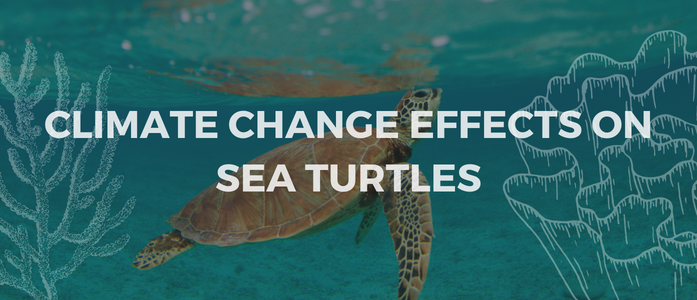Posted by Kasey | 11.29.2022 | Conservation, Sea Turtle Camp News
Climate Change’s Effect On Sea Turtles

From the day sea turtles hatch out of their eggs, they struggle to make it to adulthood. Only 1 in 1,000 sea turtles reach adulthood due to natural predators and man-made causes. As our climate changes, sea turtles are being exposed to even greater threats. Strong storms and sea level rise will destroy their nesting habitats on the beach. Ocean currents will change as our ocean warms, potentially affecting sea turtles by introducing them to new predators and harming the coral reefs that some sea turtle species need to survive.

One significant way that sea turtles will be affected is the ratio of males to females born. Sea Turtles, like other reptiles, lay eggs. Because reptile eggs cannot stay submerged, sea turtles must come onto the beach to lay their eggs. The female turtle will dig a hole about 18 inches deep and deposit about 85-150 eggs. As the eggs incubate, the temperature of the sand around their nest determines the gender of the hatchlings. Warmer sand produces more or all female hatchlings, whereas cooler sand produces all or more male hatchlings. For North Carolina loggerheads, sand that is 28°C or less will be mostly males, while sand warmer than 30.5°C will be mostly females. Sand that is between those two temperatures will have a mixture of male and female hatchlings. The problem with a warming climate is that it may drive sea turtles to extinction by creating a shortage of male turtles.
The beaches at Playa Grande on Costa Rica’s Pacific coast are already producing nests that are 70 percent to 90 percent female, depending on the year. At Junquillal Beach on the Pacific coast, where it is often too hot for eggs to hatch at all because of the black sand and lack of shade, scientists have begun moving eggs to nurseries – essentially holes dug to a certain depth on cooler areas of the beach.



 Marine Bio
Marine Bio SCUBA
SCUBA Travel
Travel School Groups
School Groups Sign Up
Sign Up CONTACT
CONTACT CAMPS
CAMPS ABOUT
ABOUT